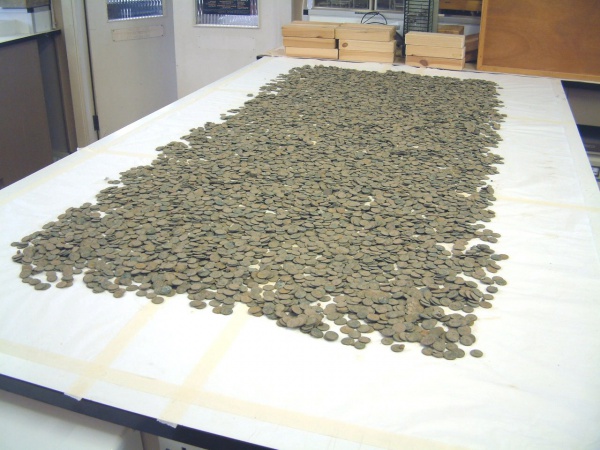Facts About Thornbury Hoard
The Thornbury Hoard is a captivating collection of 11,460 Roman coins composed of copper alloy, known as radiates and nummi, dating from 260 to 348 AD. This extraordinary discovery was made by Ken Allen while he was digging a pond in his garden in Thornbury, South Gloucestershire, England, in March 2004. It ranks as the third largest hoard of its type found in Great Britain.
The coins were discovered in a damaged pot that experts believe originated from Caldicot, Monmouthshire. Upon making the find, Ken Allen reported it to the Bristol City Museum and Art Gallery. The hoard weighed 28.6 kg and was valued at £40,000 after being declared Treasure by the Coroner. The museum was able to acquire the hoard thanks to funding from various sources.
This collection comprises 11,449 nummi and 11 radiates. The earliest coins date back to the reign of Emperor Gallienus in 260 AD, while the latest were minted in 348 AD during the Constantinian dynasty. Most of the coins are from the 330s and feature reverse designs that honor the Roman army, with soldiers holding legionary standards and depictions of cities like Rome and Constantinople. Some coins even commemorate the Battle of Chrysopolis between Constantine I and Licinius, depicting Victory standing on a ship's prow.

 Ireland
Ireland